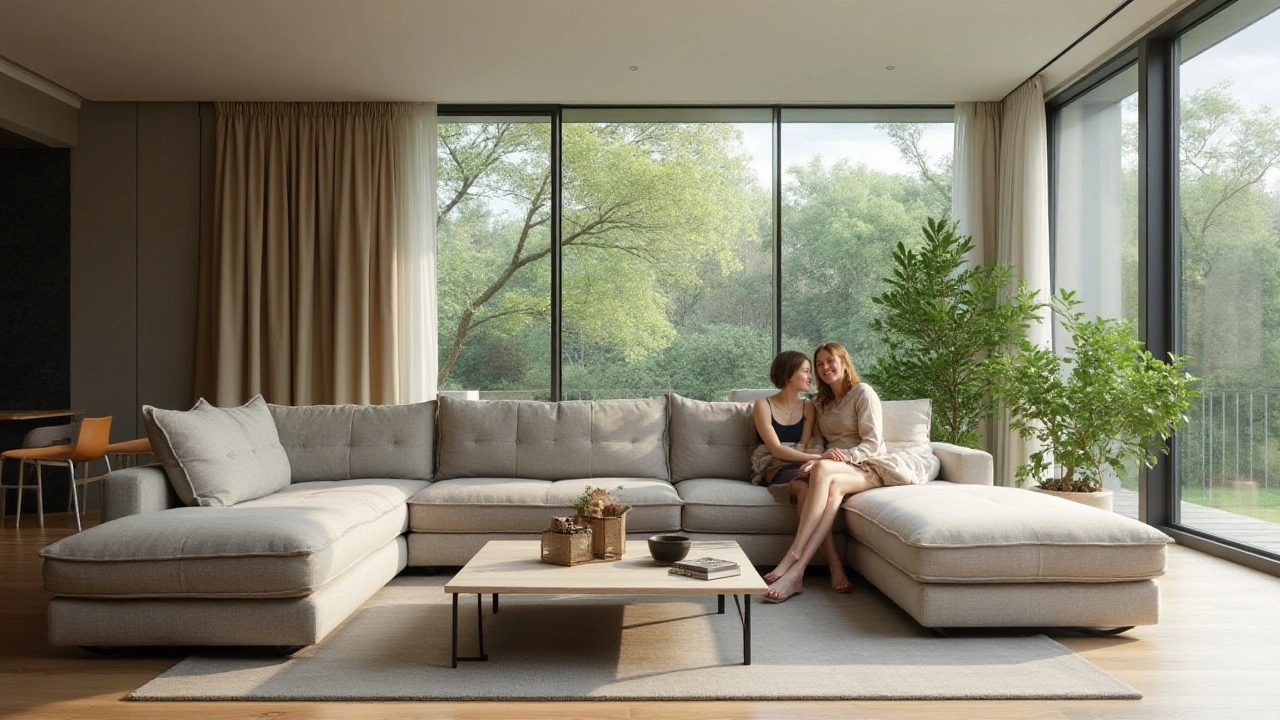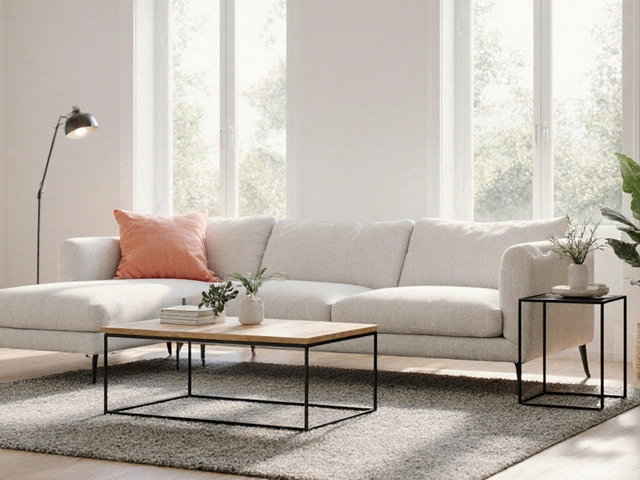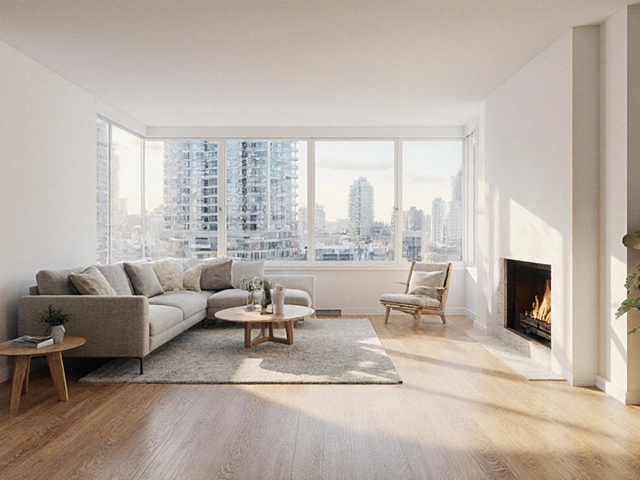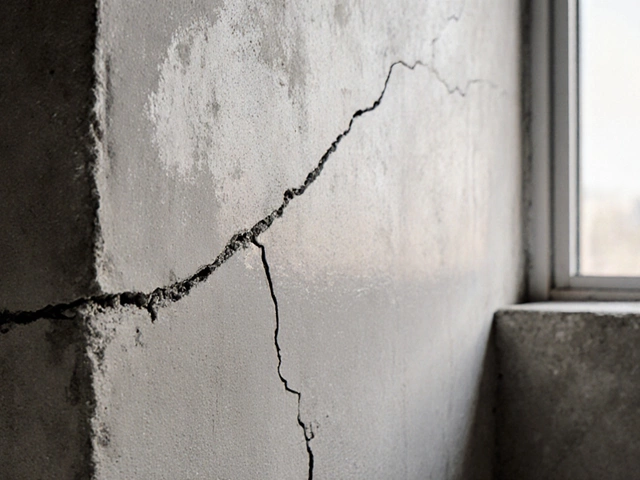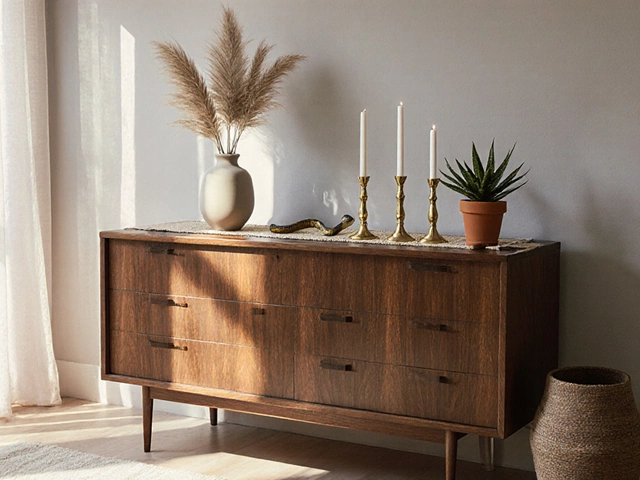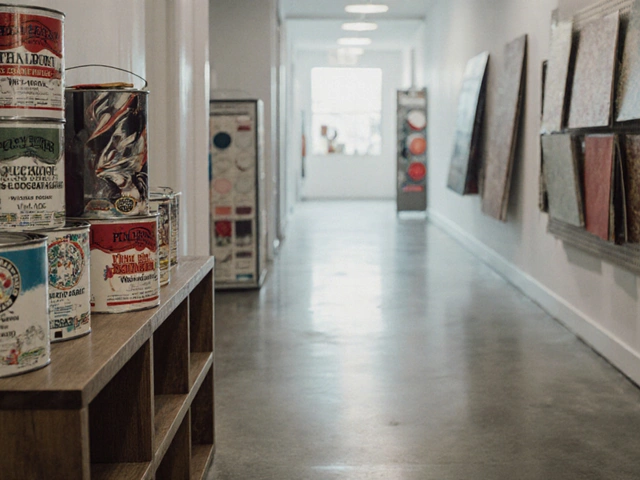When it comes to arranging furniture, the placement of your couch can be the linchpin that holds your design together. The age-old question of whether a couch should snuggle up against a wall or float amidst the room continues to intrigue homeowners and decorators alike.
The decision isn't just about aesthetics—it's about creating a space that feels right in terms of comfort, flow, and style.
Diving into this topic, we'll weigh the pros and cons of both options, factoring in everything from room size to personal preference. Let this guide illuminate the path to mastering the art of couch placement in your living room.
- Traditional Approach: Benefits of Wall placement
- Exploring Open Floor Plans
- Influence of Room Dimensions
- Creating Focal Points
- Personal Style and Practical Tips
Traditional Approach: Benefits of Wall Placement
The notion of placing a couch against a wall has long been a staple in interior design, offering practical and aesthetic benefits that many still find appealing today. One of the most obvious advantages is the effective use of space. By positioning a couch along a wall, you free up significant floor space, making it an ideal choice for small apartments or rooms where every inch counts. This arrangement encourages an open layout that maximizes walkable areas, which is vital in homes where traffic flow needs to be managed efficiently.
Another benefit lies in how wall placement simplifies creating a focal point within the living space. Traditionally, a living room's focal point would be a fireplace, a piece of art, or a television. Having the sofa snug against the wall allows these elements to stand out and directs attention to them, organizing the room's visual hierarchy effectively. This setup brings a harmonious balance, aligning the furniture to complement these features rather than compete with them.
For those who cherish stability and comfort, a couch near the wall often feels more grounded. It provides a sense of coziness and security, offering support that eliminates the anxiety of navigating around furniture carelessly placed in the middle of the room. This setting is not just about physical stability but also psychological comfort, where the openness of the rest of the room can be inviting rather than overwhelming. Depending on the layout and material of the couch, such placement can improve acoustics by minimizing unwanted echoes, which is especially beneficial if the room serves as a space for watching television or listening to music.
An interesting fact to consider is that couch placement against the wall can anchor other furniture pieces. For example, placing end tables, lamps, or plants next to a wall-aligned couch can create a cohesive unit that strengthens the room's design integrity. This configuration can provide opportunities for layering various textures and colors through accessory choices that might otherwise look cluttered if the couch were situated in the room's center. Practical considerations such as this offer substantial weight for those aiming for both functional and stylistic arrangements.
Intriguingly, the traditional approach to positioning furniture also echoes historical preferences. Designers of previous generations saw the wall as a canvas against which to build the rest of the room. A well-placed couch becomes an elemental building block, versus a floating piece that requires more consideration for proportional balance. By embracing this traditional stance, decorators can draw inspiration from successful designs of the past while still injecting modern flair and personality. In acknowledging the efficacy and timeless appeal of wall-oriented layouts, renowned interior designer Simone Adams once noted,
"A couch against the wall does not confine a space, but rather defines it, offering clarity and purpose."Such sentiments emphasize that while styles evolve, tried-and-true methods endure, preserving their validity through the shared language of function combined with beauty.
Exploring Open Floor Plans
Open floor plans have rapidly gained popularity in modern home design, transforming how we think about space and connectivity. In an open floor plan, walls separating the kitchen, dining, and living areas are minimized or eliminated, which encourages a more social atmosphere. This change allows light to flow freely throughout the space and makes homes feel larger and more inviting. However, this style of design does introduce unique challenges and opportunities when it comes to couch placement. With the absence of confining walls, your furniture arrangement can either enhance or detract from the intended fluidity of the open space.
One of the most significant advantages of an open floor plan is the flexibility it offers. Instead of being bound by architectural boundaries, you have the liberty to arrange and rearrange your living area to suit your lifestyle. A floating couch can become a strategic choice, serving as a subtle divider that defines spaces without obstructing sightlines or the sense of openness. By positioning a couch away from the walls, you create walkthroughs and flow pathways, which make movement within the space intuitive and seamless. According to a study by the American Society of Interior Designers, homes with strategic open furniture arrangements report higher user satisfaction, underscoring the value of thoughtful layouts.
However, such freedom requires a keen sense of balance and proportion. Without the guidance of walls, it's easy to disrupt the harmony of the room. A floated couch should anchor the space without overwhelming it. Consider the proportions of your furniture in relation to the room's total volume. Large rooms can comfortably house bigger seating arrangements, while smaller spaces may benefit from sectional sofas that hug tight to corners. The aim is to enhance the room's function while maintaining its lightness and openness.
"The key to successful open space design is to subtly index one area into the next while maintaining a coherent and engaging flow," explains renowned interior designer Sarah Susanka.
Style and comfort remain paramount in creating your layout. The choice of sofa design can dramatically impact the vibe of the room. Sleek, low-profile couches align well with contemporary spaces, while more traditional homes might thrive with plush, fabric-covered furniture. For those seeking to make a statement, consider opting for a couch that contrasts with the room's intrinsic style—a modern settee in a rustic setting creates a focal point that sparks conversation. Additionally, color plays an essential role; neutral tones seamlessly fuse different areas, while bolder hues can serve as eye-catching highlights that delineate and define zones within the open plan.
Finally, think about functionality. Open floor plans are often bustling hubs of activity, and your furniture should accommodate this. Opt for durable materials and textures that can withstand daily life, and consider multi-functional pieces like storage ottomans or coffee tables that provide both aesthetic appeal and practicality. Accessory selection is equally pivotal. Throw blankets, area rugs, and wall art can bridge areas, offering warmth and personality without obstructing the openness of your floor plan. Emphasizing these elements fosters a space that is both expansive and intimately personal.
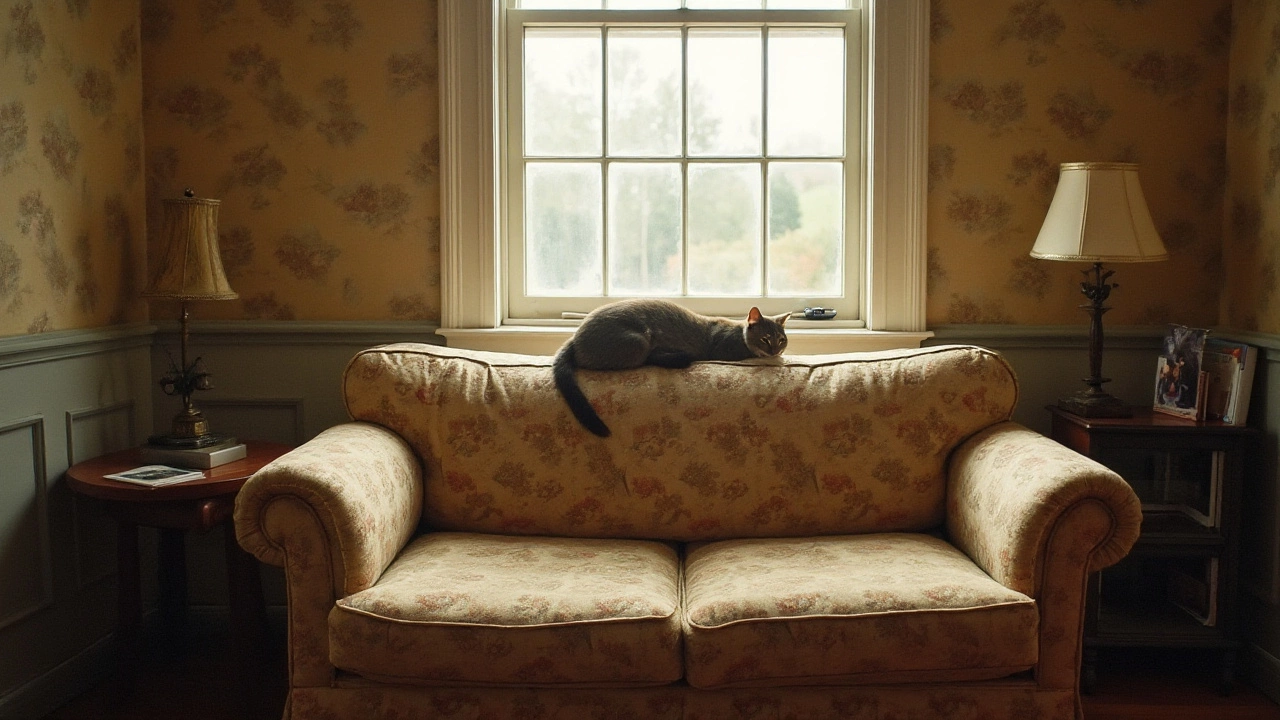
Influence of Room Dimensions
Choosing where to place your couch often hinges on the dimensions of your room, which can either broaden or constrain your options. The size of your space dictates how much creativity or restraint is necessary when deciding on whether to press that plush sofa against a wall or allow it to float. In more intimate settings like a cozy apartment living room, placing a couch against a wall is typically a more conservative choice. This not only maximizes the floor area available for movement and other furnishings but also helps in clearly defining the central livable zone. A wall can provide a straightforward perimeter to organize around and give a snug, delineated feeling to small spaces.
Conversely, in substantial rooms, protagonists of modern interior design often advocate for floating furniture that creates more conversation-centric configurations. Breaking from the norm of wall-hugging arrangements opens possibilities for new pathways and zones within a single living area. This tactic of dividing larger rooms avoids the creation of stark, unused expanses and makes the best use of every square foot. However, effective floating of couches requires considering other elements like the position of a central rug, focal art pieces, or shelving units that can help anchor a central point.
Large dimensions offer golden opportunities for breaking traditional Feng Shui principles by allowing energy to flow freely around strategic placements.
"Scale and proportion play a pivotal role in furniture layout,” explains interior designer Sarah Richardson. “A large piece like a couch should relate to the scale of the room—a way to guide flow and function."Expansive rooms give room for more furniture to function together harmoniously, like introducing multiple seating areas or pairing couches with large coffee tables or groupings of varied chairs, creating a more dynamic and interactive atmosphere.
Ultimately, room dimensions serve as both a framework and a canvas for your interior design strategy. The challenge lies in understanding how these dimensions can enhance the route and rhythm of a space. By carefully considering the placement of each piece, you can create an environment that is both functional and aesthetically appealing, lively yet comfortable, and chic while entirely in tune with your personal style. A well-placed couch, irrespective of size, should compel, invite, and suggest comfort as the cardinal checkpoint, whether it resolutely hugs a wall or invites engagements by curling away from it.
Creating Focal Points
In the landscape of interior design, a focal point is an essential element that commands attention and sets the tone for the entire room. Whether you’re working with a small apartment or a spacious living area, deciding not to place your couch against a wall and instead allowing it to float can help establish a powerful focal point. This approach can transform the way furniture interacts within the room, turning an otherwise mundane space into one that's lively and inviting. A strategically placed sofa in the heart of the room can naturally draw the eye, offering both visual interest and functional division of space.
Designing with a focal point in mind involves more than just placement; it's about layering elements to create a cohesive look. Consider placing your sofa parallel to interesting architectural features like a fireplace or a large window. This alignment not only highlights the couch itself as a critical piece of furniture but also complements the room's inherent features. When the couch is positioned thoughtfully, it becomes a dynamic part of the decor rather than simply pushed to the edges. As interior designer Nate Berkus once said,
"Your home should tell the story of who you are and be a collection of what you love."This principle is key when creating focal points that truly resonate with your personal style.
Beyond just aesthetics, there are practical benefits to having a central focal point. It can serve as an anchor for other elements like a coffee table or rug, drawing together disparate parts of the room into a harmonious whole. This setup can facilitate conversation and engagement, making the space feel more intimate and comfortable. Floating a sofa away from the walls can subtly nudge people to gather, enhancing social interactions by creating a central meeting area. Such arrangements often encourage better traffic flow and can be particularly beneficial in open floor plans, where defining functional areas is crucial.
When establishing a focal point, adding layered lighting can enhance the effect. Utilize a mix of ceiling lamps, floor lamps, and task lights to build depth and highlight key areas of the room. This approach not only spotlights your chosen features but also contributes to an ambiance that feels warm and inviting. For those who cherish collectibles or personal artifacts, placing these items near your couch can also emphasize the focal point, turning everyday elements into conversation starters that reflect your unique taste.
Stats from the American Society of Interior Designers indicate that rooms with a well-defined focal point are perceived to be more aesthetically pleasing and functionally effective. A compelling focal point doesn't just beautify; it fundamentally transforms the usability of a space. When considering how to position your couch, take advantage of this concept to enhance both the look and feel of your room. Evaluating the role of key furnishings and decor in your home reveals a unique opportunity to craft an environment that captivates and inspires.
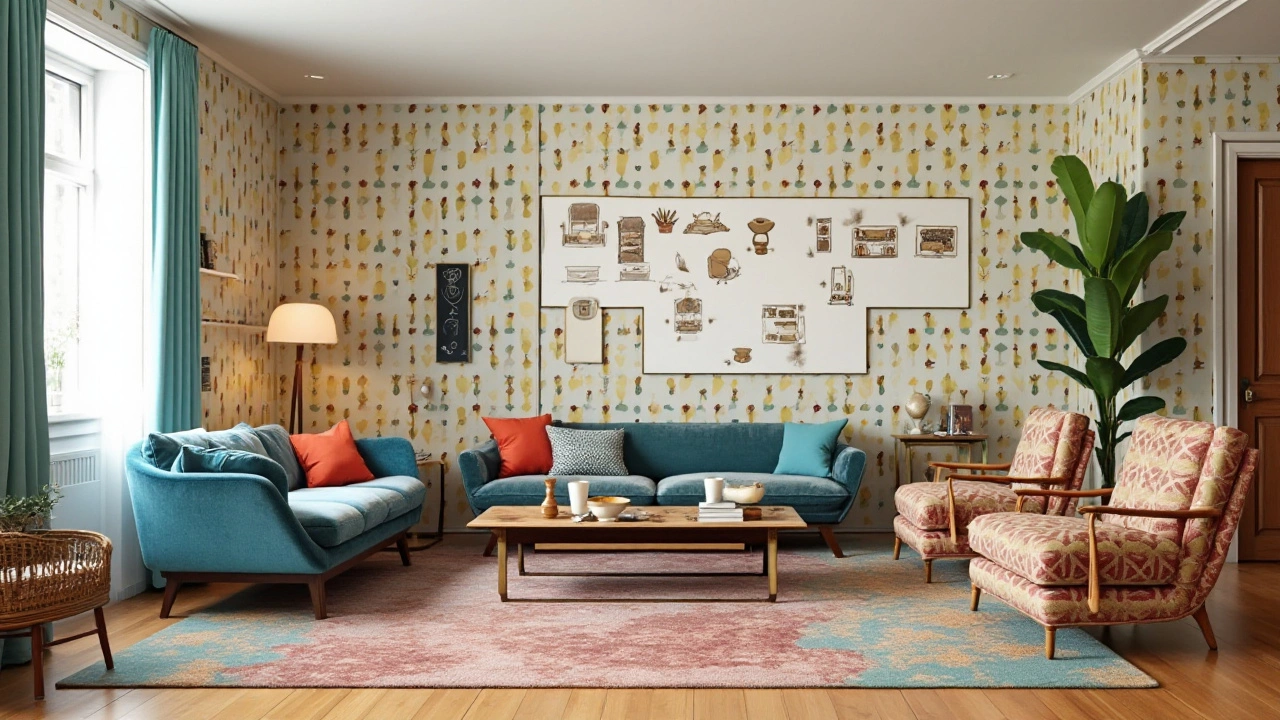
Personal Style and Practical Tips
Embracing personal style in your home isn’t simply about picking the trendiest couch or the most eye-catching colors—it's about expressing who you are through your space. When considering whether to place your couch against a wall or float it in the room, the decision starts with understanding the flow of your house and how you intend to use your living space. Does your family enjoy hosting large gatherings, or do you prefer intimate family movie nights? The answers to these questions will guide you in creating a layout that not only looks perfect but feels perfect too.
For those who love a cozy setup, placing the sofa against the wall can create a sense of intimacy and warmth. It provides a soft boundary, allowing the rest of the room to open up and be utilized in various ways. However, this traditional approach doesn't have to be boring. Add layers of texture with throw pillows and blankets. A tall lamp on the side or a piece of artwork above can also enhance the vertical space, drawing eyes up and creating a sense of height.
If you're one to defy convention, letting your furniture float in the space might better suit your personal style. This approach can provide a more fluid, airy atmosphere. It encourages conversation by placing your seating arrangement in a circular fashion, which can be perfect for entertaining. Use a rug to anchor the sofa set in the middle of the room and create a defined area—an oasis amidst open plan chaos.
"Design is not just what it looks like and feels like. Design is how it works." – Steve Jobs
To personalize the setup, consider the emotional impact your space has on you and your guests. Reflective surfaces such as mirrors can add depth, especially in smaller rooms. Mixing different materials like metals, wood, and upholstery can create a layered, intriguing ambiance. And don’t be afraid to display quirky personal items—these elements give your home its character and can be fantastic conversation starters.
Practicality, however, plays a crucial role too. Evaluate the room dimensions and traffic flow before making a final decision. In a busy household, making sure there's enough space for people to move comfortably is vital. If opting for an open arrangement, position your sofa so it’s not blocking the way into other rooms but rather inviting guests into your living area. And if you have children or pets, account for their activities and safety by ensuring that sharp corners are kept to a minimum or softened with accessories.
Finally, lighting can make or break a room. Use a combination of overhead lighting, floor lamps, and table lamps to create different moods. Strategic placement of these lights can enhance the focal points of your room and highlight your chosen furniture layout. Remember, your space should welcome you, reflect your individuality, and offer the practicality your lifestyle needs. A well-thought-out living area is a place you’ll find comfort and joy in long after trends have changed.
